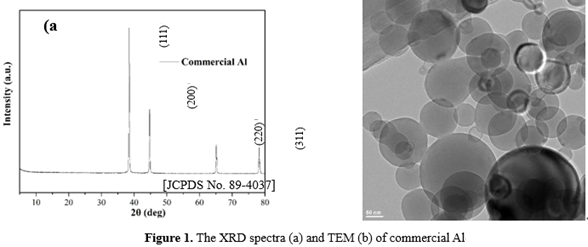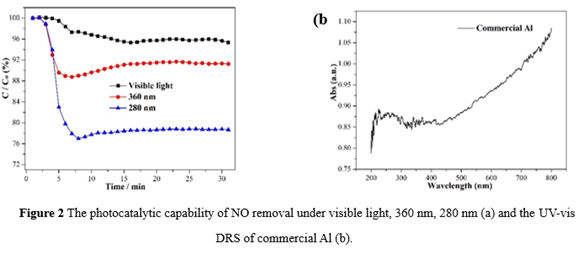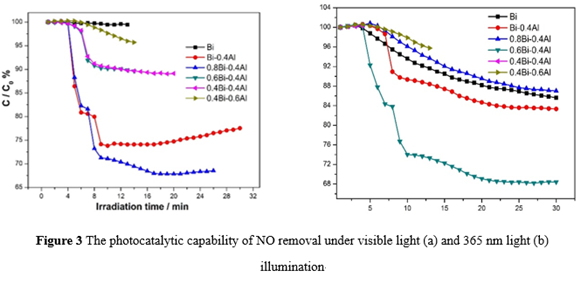 |
 |
| |
Selected Development Project |
| |
 |
| Project Title |
Design of Plasmonic Poor Metal Based Photocatalyst with High Light Utilization and Quantum Efficiency for Nitric Oxides Abatement
設計具有高光利用和量子效率的等離子貧金屬光催化劑用於氮氧化物降解 |
|
| |
| Principal Investigator |
Dr Ho Wing-kei |
|
| |
| Area of Research Project |
Science and Environmental Studies |
|
|
|
|
|
|
|
| Project Period |
From 1/1/2018 To 31/12/2020 |
|
| Objectives |
- To develop new LSPR-poor-metal-based photocatalysts with uniform morphology and ideal molecular size structure to have strong light capture, efficient photo-driven electrons and hole separation as well as high quantum efficiency for air purification.
- To investigate the chemical adsorption, activation, interfacial charge carriers transfer and the photocatalytic reaction processes of the reactants on the surface of LSPR-poor-metal based photocatalysts
- To firstly clarify and disclose the UV light-driven photocatalytic LSPR-poor-metal-based mechanisms through the experimental results with theoretical quantum chemistry calculations.
|
|
| Methods Used |
Designing efficient photocatalysts with strong light absorption, accelerated charge separation, and high quantum efficiency are highly significant. In consideration of highly active photocatalysts for practical application, this proposal systematically studies the new plasmonic photocatalyst elements with high light utilization and quantum efficiency. The localized surface plasmon resonance (LSPR) of metal elements is a potential solution to this crucial issue. Surface plasmon resonance (SPR) noble metals (silver and gold) nanoparticles are widely investigated because of their strong absorption, scattering, and apparently amplified local electric fields near the nanoparticles. Previous research showed that SPR noble metals highly enhance the photocatalysis efficiency of the substrate semiconductor/molecular photocatalysts. Nevertheless, Au and Ag are scarce on earth and excessively expensive commodities, which largely limits the practical application of the noble metals. Hence, the development of abundant as well as cheap cocatalyst to replace the noble metals is urging and necessary. Poor metals is a term generally taken to the metallic elements in the p-block of the periodic table that are more electronegative than the transition metals such as Al, In, Sn, Ga, Tl, Pb, and Bi. They are utilized for plasmonics in the near to far ultraviolet (UV) range, similar to the noble metals Au and Ag in the visible (Vis) range. Here, poor metal Al was shown, a plasma metal in the UV region, to act as a potential candidate to replace the precious Au and Ag to improve the photocatalytic efficiency of the semiconductors. Light absorption is closely related to the nature of the metal, shape, size, and the dielectric properties of the surrounding medium. The unique properties of the different morphologies of the Al plasmaonic photocatalyst will be explored and developed. The interfacial charge transfer mechanism of the Al photocatalysts is discussed due to surface nanostructures. In addition, reactants transfer, absorption, activation, as well as the photochemical and photocatalytic reaction processes on the surface of Al-based photocatalysts will be systematically studied. Combining the theoretical quantum chemistry calculations with experimental results, the internal relationships among the surface properties, morphologies, and nanostructures of the photocatalysts will be illustrated. New Al LSPR photocatalyst with high quantum efficiencies will be developed. This abundant and economically feasible LSPR photocatalyst is a good candidate for expensive noble metal (Au and Ag) to modify and enhance other metal or conductor photocatalysts, which is beneficial for expanding the practical application domains of photocatalysts.
|
| Summary of Findings |
We have investigated the photocatalytic capability of commercial Al Figure 1 under visible light and 360 and 280 nm illumination (Figure 2).
  We found that pure commercial Al had photocatalytic performance (24.6%) for NO removal under 280 nm irradiation, which may be ascribed to the fact that UV-vis spectra showed obvious wide-ranging light absorption in long-wavelength areas (Figure 2b). It is interesting to note that Bi/Al alloy was fabricated by solution-reduction methods, and the photocatalytic removal of NO using this poor metal alloy can reach 30.2% under visible-light irradiation (Figure 3a) and 33.6% under 365 nm light illumination (Figure 3b) with an different optimized ratios of Bi/Al alloy. We found that pure commercial Al had photocatalytic performance (24.6%) for NO removal under 280 nm irradiation, which may be ascribed to the fact that UV-vis spectra showed obvious wide-ranging light absorption in long-wavelength areas (Figure 2b). It is interesting to note that Bi/Al alloy was fabricated by solution-reduction methods, and the photocatalytic removal of NO using this poor metal alloy can reach 30.2% under visible-light irradiation (Figure 3a) and 33.6% under 365 nm light illumination (Figure 3b) with an different optimized ratios of Bi/Al alloy. 
|
| Impact |
- The light absorption as well as the separation of the photo-induced electrons and holes of the photocatalyst can be comparatively enhanced by utilizing the new LSPR-poor-metal as an efficient photocatalysts and cocatalyst. This kind of new photocatalyst can solve the crucial problems of low light utilization and low photocatalytic efficiency.
- This work will be the first study to investigate the unique properties of LSPR poor metal nanoparticles with different morphologies and sizes. The relationships among the composition, structure and properties of the LSPR poor metal based photocatalysts will be studied through combining with the calculation results of quantum chemistry.
- This work will be the first study to reveal the preparation strategies and rules of LSPR poor metal based photocatalyst with uniform morphology and controllable size, and clear structures for air purification.
|
| Selected Output |
- Dong, Fan, et al. Chemical communications 50.72 (2014): 10386-10389.
- [18] Weng, Sunxian, et al. Journal of Materials Chemistry A 1.9 (2013): 3068-3075.
- [19] Liu, Xiangwen, Huaqiang Cao, and Jiefu Yin. Nano Research 4.5 (2011): 470-482.
- [20] Dong, Fan, et al. Environmental science & technology 49.20 (2015): 12432-12440.
- [21] Sun, Yanjuan, et al. Physical Chemistry Chemical Physics 17.16 (2015): 10383-10390.
- [22] Zhao, Zaiwang, et al. The Journal of Physical Chemistry C (2016). DOI: 10.1021/acs.jpcc.6b01188
- [23] Chang, Chun, et al. Chemical engineering journal 233 (2013): 305-314.
- [24] Knight, Mark W., et al. ACS nano 8.1 (2013): 834-840.
- [25] Taguchi, Atsushi, et al. Applied Physics Letters 101.8 (2012): 081110.
- [26] Hao, Qi, et al. Scientific reports 5 (2015).
|
| Biography of Principal Investigator |
Dr Ho Wing-kei is the Associate Professor and Associate Head (Research and Laboratory Management) of Department of Science and Environmental Studies, The Education University of Hong Kong. His Specific research foci include air pollution control, indoor air quality (IAQ) monitoring, heterogeneous catalysis, and photocatalysis and nanotechnology for environmental remediation. Dr Ho’s teaching areas include chemistry, environmental technology, air pollution control, and nanotechnology. |
Funding Source |
General Research Fund |
|
|
 |
|
 |


